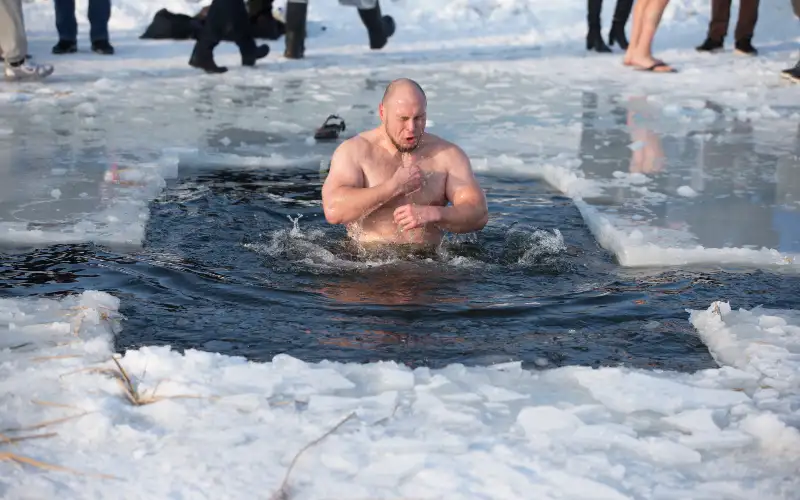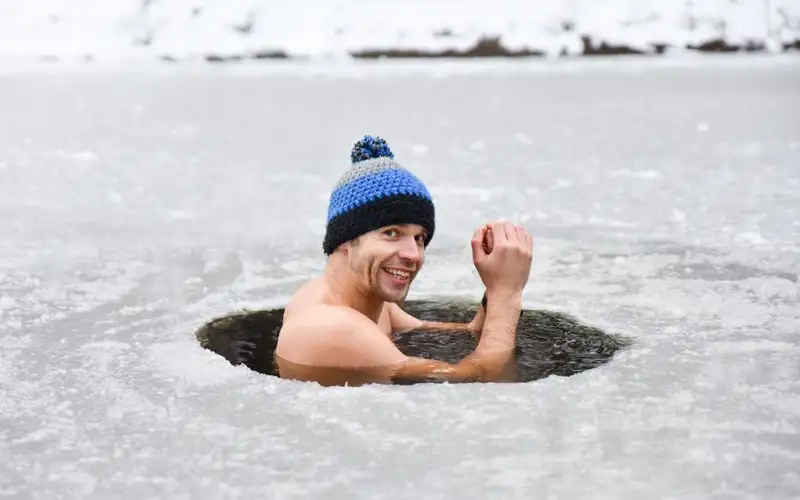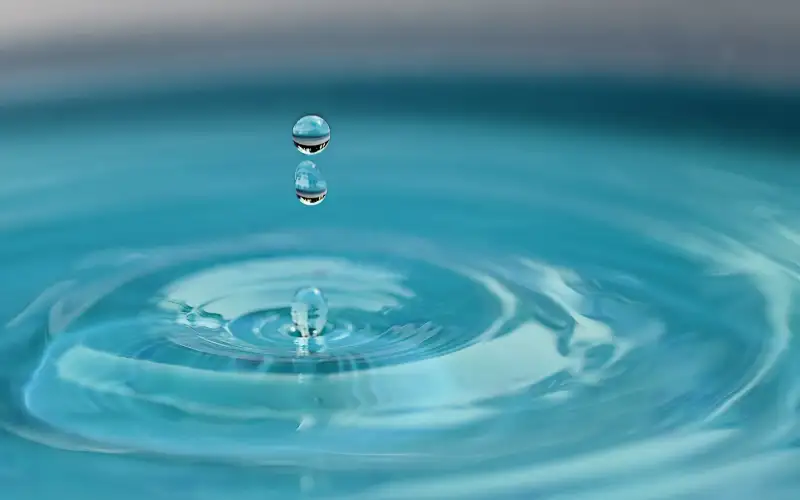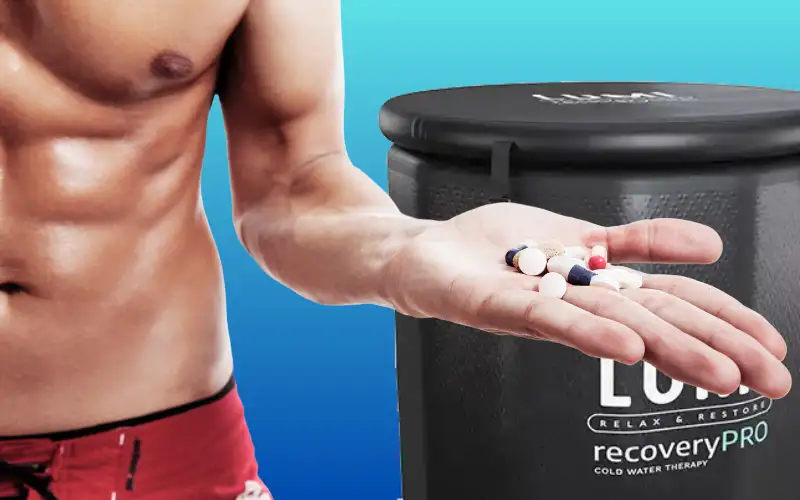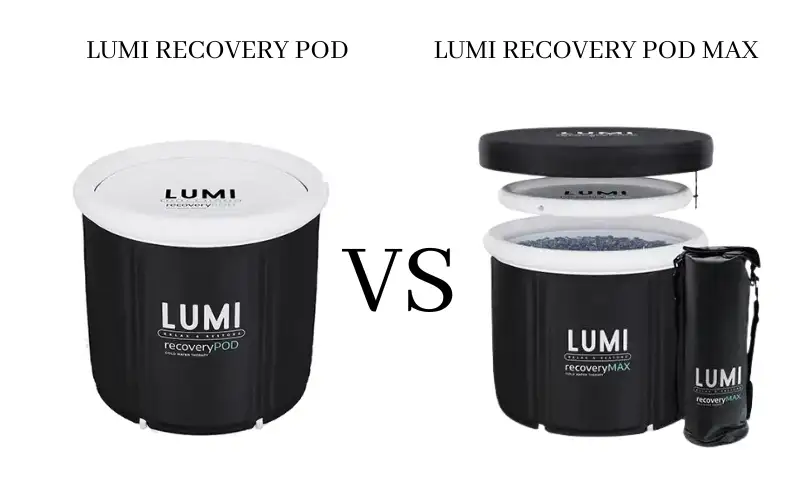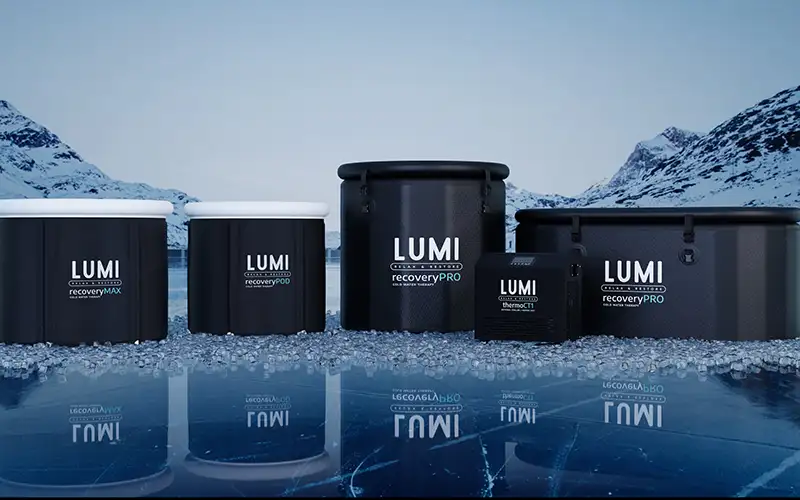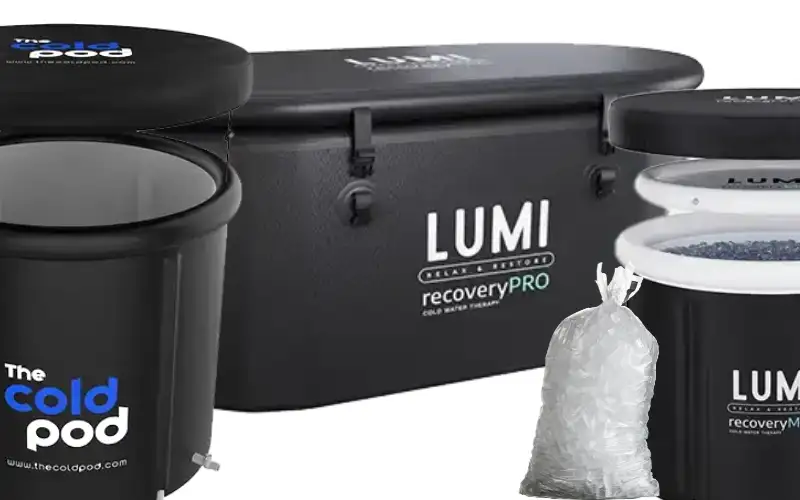Ice baths, also known as cold water immersion or cryotherapy, have long been used by athletes, fitness enthusiasts, and even medical professionals as a powerful recovery tool. We have known about ice bath benefits for a long time, so it is not a new practice, but it has had a resurgence in popularity in recent times.
Wim Hof, also known as “The Iceman,” has played a significant role in rekindling the practice of ice baths and cold exposure in modern culture. Through his remarkable feats and scientific insights, Hof has brought attention to the potential benefits of subjecting the body to extreme cold temperatures, inspiring countless individuals to embrace this ancient practice.
Hof’s journey began with his personal exploration of cold exposure and breathwork techniques. He developed a unique method that combines specific breathing exercises, meditation, and cold exposure to tap into the body’s innate capacity to withstand and adapt to extreme cold. Through his practice, Hof achieved extraordinary accomplishments, including prolonged ice baths, running marathons barefoot in snow, and climbing mountains wearing only shorts.
One of the most significant contributions Wim Hof has made is demystifying the physiological responses that occur during cold exposure. He has demonstrated that humans can consciously influence their autonomic nervous system, which was once considered beyond conscious control. Through his breathing techniques, individuals can activate their sympathetic and parasympathetic nervous systems, allowing them to regulate their body temperature and physiological responses.
Hof’s achievements have also caught the attention of the scientific community, leading to numerous studies investigating the potential health benefits of his method. These studies have revealed intriguing findings, such as improved immune function, reduced inflammation, and increased resilience to stress. The Wim Hof Method has been shown to enhance the body’s ability to adapt to extreme conditions, offering potential therapeutic applications for various health conditions.
Furthermore, Hof’s charismatic personality and passion for sharing his knowledge have captivated a wide audience. He has conducted workshops and trained thousands of individuals, empowering them to tap into their inner potential and explore the transformative effects of cold exposure. His teachings have resonated with people seeking alternative ways to improve their physical and mental well-being, resulting in a resurgence of interest in ice baths, cold plunges and cold-water swimming.
In modern culture, Wim Hof has become an iconic figure, inspiring a movement centered around embracing discomfort, cultivating resilience, and exploring the limits of human potential. His remarkable achievements, combined with scientific research supporting the benefits of cold exposure, have propelled ice baths into the mainstream consciousness, making it a popular practice among athletes, wellness enthusiasts, and individuals seeking to optimise their health.
Through his passion, dedication, and groundbreaking insights, Wim Hof has reawakened the practice of ice baths, reminding us of the profound connection between our bodies and the elements around us. His influence has revitalised this ancient practice, bringing it into the modern era as a powerful tool for physical and mental well-being. As more individuals embrace the transformative effects of ice baths, the legacy of Wim Hof continues to shape and inspire a new generation of seekers on the path to self-discovery and optimal performance.
Best Ice Bath to Cold Plunge at Home?
We’ve reviewed and tested a whole host of home ice baths and our top picks for best ice baths can be found here >>
Ice Bath Benefits
Though the idea of immersing oneself in freezing water may sound daunting, the benefits derived from ice baths are well worth the temporary chill. In this article, we’ll delve into the numerous advantages of ice baths and explore how this invigorating practice can boost your physical and mental well-being.
1. Accelerated Muscle Recovery
Ice baths have gained a well-deserved reputation for their remarkable ability to accelerate muscle recovery and alleviate exercise-induced inflammation. The frigid temperature of the water initiates a series of physiological responses that contribute to the healing process. By constricting blood vessels, ice baths effectively decrease blood flow to the muscles, facilitating several benefits.
Firstly, this constriction aids in the removal of lactic acid and other metabolic waste products that accumulate during intense physical activity. The reduced blood flow hinders the buildup of these byproducts, which are responsible for muscle fatigue and soreness. Through the flushing out of these waste products, ice baths help alleviate muscle soreness and promote faster recovery, enabling individuals to bounce back from their training sessions more swiftly.
Moreover, the cold temperature of the water exerts an anti-inflammatory effect on the muscles. Inflammation is a natural response to tissue damage caused by intense exercise, but excessive or prolonged inflammation can impede the recovery process. Ice baths counteract this by reducing inflammation, thereby expediting the healing process. This reduction in inflammation not only aids in preventing delayed onset muscle soreness (DOMS) but also enhances overall post-exercise recuperation.
By incorporating ice baths into their recovery routines, athletes and fitness enthusiasts can benefit from an expedited recovery period, allowing them to resume their training or physical activities more quickly. The combination of reduced muscle soreness, accelerated removal of metabolic waste products, and diminished inflammation provides individuals with a significant advantage in maintaining their peak performance levels.
2. Reduced Swelling and Tissue Damage
Cold water immersion has been proven to be highly effective in reducing swelling and minimizing tissue damage resulting from intense physical activity. When individuals immerse themselves in icy water, blood vessels undergo constriction, limiting the flow of fluids to the affected areas. This constriction plays a crucial role in preventing excessive swelling and can provide relief from pain associated with various injuries or conditions, including sprains, strains, and tendinitis. The benefits of ice baths are especially pronounced for athletes participating in high-impact sports, where the risk of muscle or joint trauma is elevated.
By constricting blood vessels, ice baths limit the amount of fluid that can accumulate in injured tissues. This reduction in fluid buildup helps to minimise swelling and oedema, which are common consequences of physical trauma. The cold temperature of the water also acts as a natural analgesic, numbing the affected area and providing temporary pain relief.
For athletes engaging in high-impact sports, such as football, rugby, or basketball, the risk of muscle or joint injuries is significantly increased. Ice baths offer a valuable tool for mitigating these risks. The cold water immersion can help prevent immediate and excessive swelling in case of acute injuries, providing a window of opportunity for proper medical assessment and treatment. Moreover, the constriction of blood vessels slows down the inflammatory response, reducing tissue damage and promoting more efficient healing.
Ice baths are particularly beneficial during the immediate post-exercise period, when microtrauma to muscles and connective tissues may have occurred. The cold temperature helps prevent the onset of excessive inflammation and swelling, which can delay the recovery process and impede performance in subsequent training or competition. By incorporating ice baths into their recovery routine, athletes can potentially reduce the severity and duration of tissue damage, facilitating a faster return to full functionality.
It is important to note that while ice baths can be an effective tool in managing swelling and tissue damage, they should not replace proper medical evaluation and treatment. In the case of severe injuries, it is crucial to consult a healthcare professional for accurate diagnosis and appropriate care.
Enjoy Ice Baths?
Don’t forget to have something to warm up with when you get out. Dryrobe waterproof changing robes are great, but they can be expensive. Check out our Dryrobe alternatives here >>
3. Enhanced Circulation and Immune Function
Alternating between hot and cold water during ice baths provides a remarkable boost to circulation and fortifies the immune system. The cold water initiates the constriction of blood vessels, while subsequent exposure to warmth prompts their dilation, resulting in improved blood flow throughout the body. This cyclic alternation effectively promotes the efficient delivery of vital nutrients and the removal of waste products, facilitating the recovery process. Furthermore, the temporary cold stress experienced during ice baths stimulates the production of white blood cells, consequently enhancing immune function and reducing the risk of illness.
When immersed in cold water, the constriction of blood vessels occurs as a natural response to the extreme temperature. This constriction redirects blood flow towards vital organs and helps to preserve core body temperature. However, when the body is subsequently exposed to warm water or a warm environment, the blood vessels dilate, facilitating increased blood flow to peripheral tissues. This alternating constriction and dilation of blood vessels stimulates circulation, ensuring optimal nutrient supply to muscles and tissues and facilitating the efficient removal of waste products.
Enhanced circulation resulting from ice baths is vital for the recovery process after physical exertion. The improved blood flow helps deliver essential nutrients, including oxygen, to the muscles, facilitating their repair and regeneration. Additionally, the efficient removal of metabolic waste products, such as lactic acid, promotes faster recovery and reduces the risk of muscle soreness.
Furthermore, the exposure to cold stress during ice baths triggers a response within the body that can enhance immune function. The temporary cold exposure stimulates the production of white blood cells, which are integral to the immune system’s defense against pathogens and infections. The increased production of white blood cells strengthens the immune system, making the body more resilient and better equipped to ward off illnesses.
Regular practice of ice baths, with their alternating hot and cold cycles, can provide long-term benefits for circulation and immune function. By improving blood flow and nutrient delivery, ice baths contribute to overall cardiovascular health. The enhanced immune function helps to reduce the risk of infections and illnesses, ensuring individuals can maintain their physical well-being and engage in regular training or physical activities without interruptions.
4. Mental Health and Stress Relief
Ice baths offer not only physical benefits but also a profound positive impact on mental well-being. The intense cold experienced during an ice bath triggers the release of endorphins, which are natural mood-enhancing hormones. This release of endorphins creates a rush of euphoria, elevating mood and promoting a sense of overall well-being. The invigorating effect of ice baths can significantly reduce stress and provide a much-needed respite from the pressures of daily life.
Endorphins, often referred to as the “feel-good” hormones, have a direct impact on the brain and can act as natural painkillers and mood stabilisers. The immersion in icy water stimulates the body to produce these endorphins, leading to a noticeable improvement in mood and a reduction in stress levels. Many individuals report feelings of euphoria, mental clarity, and a sense of rejuvenation after an ice bath session.
Moreover, ice baths serve as a form of controlled exposure to extreme temperatures, which can have profound effects on mental resilience and stress management. By willingly subjecting oneself to the intense cold, individuals can develop a greater ability to cope with stress and adapt to challenging situations. The experience of enduring the discomfort of the cold water and successfully completing an ice bath session can instill a sense of achievement and boost self-confidence.
Ice baths also provide a unique opportunity for mindfulness and mental focus. The sharp sensation of the cold water demands complete attention and presence in the moment. By focusing on the sensations of the cold and the breath, individuals can cultivate a state of mindfulness, temporarily setting aside worries or distractions. This mindfulness practice can have a calming effect on the mind, reducing anxiety and promoting a sense of inner peace.
In our fast-paced and stress-filled modern lives, ice baths offer a much-needed respite and a chance to reconnect with oneself. The combination of endorphin release, heightened mental resilience, and mindfulness practices can contribute to a significant reduction in overall stress levels. Regularly incorporating ice baths into a self-care routine can have profound long-term benefits for mental health, allowing individuals to better manage stress, improve mood, and cultivate a sense of balance and well-being.
However, it is important to note that ice baths may not be suitable for everyone, particularly individuals with certain medical conditions or those who are more sensitive to extreme cold temperatures. It is advisable to consult a healthcare professional before incorporating ice baths into a routine, particularly if there are concerns about pre-existing health conditions or medication interactions.
5. Increased Energy and Performance
Ice baths have the remarkable ability to increase energy levels and enhance performance, making them a popular choice among athletes seeking to maximise their training outcomes. The immersion in cold water stimulates the central nervous system, invigorating both the body and mind. Athletes frequently incorporate ice baths into their training routines as a means to optimise their performance. By reducing muscle fatigue, expediting recovery, and providing a significant energy boost, ice baths enable athletes to train harder, endure longer durations of physical activity, and perform at their peak potential.
The immersion in cold water during an ice bath triggers a physiological response that stimulates the central nervous system. The sudden exposure to the extreme cold acts as a powerful wake-up call for the body, eliciting a surge of alertness and revitalisation. This awakening effect helps athletes overcome feelings of sluggishness or fatigue, providing a much-needed boost of energy.
One of the key benefits of ice baths for athletes is the reduction in muscle fatigue. Intense physical exercise can lead to the accumulation of metabolic byproducts, such as lactic acid, which contribute to muscle fatigue and hinder performance. However, the cold temperature of the water in ice baths facilitates the removal of these waste products, reducing muscle fatigue and promoting faster recovery. By flushing out metabolic waste, ice baths help restore the muscles’ ability to generate force and power, enabling athletes to maintain high-intensity training for longer periods.
Furthermore, the accelerated recovery effect allows athletes to bounce back more quickly from their training sessions and perform at their best in subsequent sessions. The faster recovery afforded by ice baths enables athletes to train more frequently and at higher intensities, ultimately leading to improved performance.
The surge of energy and enhanced recovery provided by ice baths allows athletes to push their limits and reach new levels of performance. By incorporating ice baths into their training routines, athletes can extend their training duration, increase training volume, and improve their overall performance capacity. The combination of reduced muscle fatigue, accelerated recovery, and heightened energy levels offers athletes a significant competitive advantage.
6. Potential For Weight Loss
Ice baths have gained attention in the realm of weight loss due to their potential effects on metabolism, particularly through the activation of brown adipose tissue (BAT). Brown adipose tissue is a specialized type of fat that plays a crucial role in thermogenesis, the process of generating heat in the body. BAT is rich in mitochondria and has the unique ability to burn calories to produce heat, making it a potential target for weight loss strategies.
When exposed to cold temperatures, such as during an ice bath, brown adipose tissue is activated. The cold stimulus triggers the release of certain hormones and the activation of specific receptors in BAT. This activation leads to an increase in thermogenesis, resulting in the burning of stored body fat to generate heat. By targeting brown adipose tissue through ice baths, individuals may potentially enhance their metabolic rate and contribute to weight loss efforts.
The activation of brown adipose tissue during ice baths offers several potential benefits for weight management. Firstly, the increase in thermogenesis caused by BAT activation results in the burning of calories, aiding in calorie expenditure and potentially contributing to a calorie deficit necessary for weight loss. Additionally, the activation of brown adipose tissue can improve insulin sensitivity and glucose metabolism, which may help regulate blood sugar levels and prevent excessive fat storage.
It is important to note that while ice baths may have a positive impact on weight management through BAT activation, they should be regarded as a complementary strategy alongside a balanced diet and regular physical activity. Weight loss is a complex process that requires a holistic approach, including a healthy diet, regular exercise, and overall lifestyle modifications.
Should I Start Taking Ice Baths?
While the thought of submerging oneself in an ice-cold bath may appear intimidating, the benefits derived from ice baths make it a practice worth considering. From accelerated muscle recovery to reduced swelling, enhanced circulation, and mental well-being, the advantages of ice baths are far-reaching. Incorporating this refreshing and invigorating practice into your routine can unlock new levels of physical and mental performance, aiding you in achieving your fitness goals and promoting overall well-being.
Please note that ice baths should be used in moderation and under appropriate guidance. The optimal duration and temperature for an ice bath can vary depending on the individual’s tolerance and the intensity of their physical activity. Consulting with a qualified professional, such as a sports therapist or trainer, can ensure that ice baths are integrated safely and effectively into a comprehensive recovery plan.
